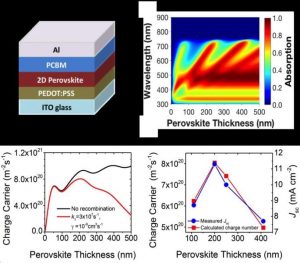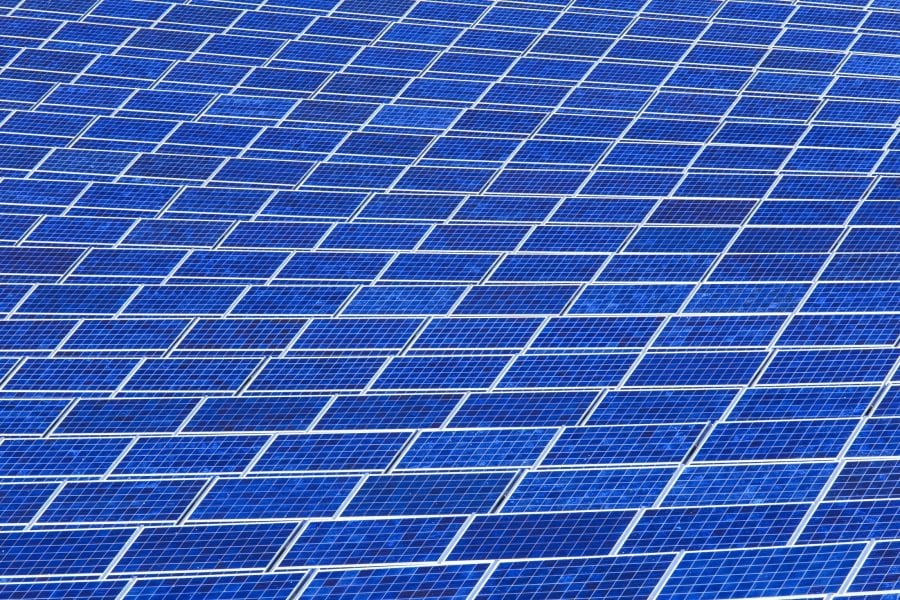Recent successful implementation of two-dimensional (2D) hybrid metal-halide perovskites in stable, high-efficiency solar cells have propelled these materials to the forefront of scientific investigation. For further advances in the field, it is of high importance to have a fundamental understanding of how these materials respond to light and the resulting changes occurring in the material properties.
In a recently published article in Solar-RRL scientists study how to enhance the light absorption, and analyze the electricity loss in these perovskite solar cells – two crucial factors for cell efficiency. First, the optical properties of thin 2D layered perovskite films are probed, and simulate the light absorption in their solar cells. It is shown that more light can be captured via optical interference effects (optical cavity-tuned absorption) using appropriate device layer thicknesses, especially in the perovskite layer.
Second, a model to analyze the electricity loss arising from charge-carrier recombination in these solar cells is proposed, revealing that the loss increases for thicker perovskite films. Computed device efficiencies are found to be in good agreement with experiment.
This study is the first in perovskite-based solar cells that quantifies the competition between light harvesting and electricity loss due to charge-carrier recombination. Since the charge-carrier recombination is accounted for in the optical cavity-tuned absorption enhancement, this work illustrates strategies for optimizing the film thickness of each layer in the solar cell structure, enabling more light absorption and less loss, thereby providing predictive metrics that can be used to guide device architecture design and fabrication for high photovoltaic efficiency.
Finally, the model provides a useful tool to estimate the charge-carrier recombination in new photovoltaic materials.
The text was generously provided by Prof. Bin Liu and edited by Ekaterina Perets.

















